Does LACMA Have a Looted Art Problem?
- Oops!Something went wrong.Please try again later.
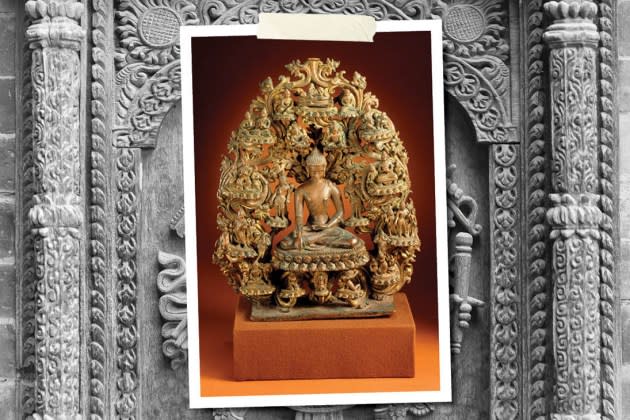
Michael Phillips — producer of The Sting, Taxi Driver and Close Encounters of the Third Kind — learned in early January 2023 that a Buddha sculpture he owned was plundered. An anonymous online activist collective, Lost Arts of Nepal, had publicized a previously published photo of the object, residing on a low glass table in his Beverly Hills living room, alongside another, older picture revealing it ensconced at the base of a temple monument in Bungamati, a town in the Kathmandu Valley known worldwide for its ancient culture. “FAITH STOLEN,” the group announced on social media: “LOOTED GODS.”
“It was a sad shock,” Phillips recalls of the revelation. He’d purchased the piece more than a decade earlier from Swiss dealers based in New York. “I was enjoying living with it. But the minute I found out it was ‘stolen,’ I couldn’t live with it.” He contacted Nepal’s embassy, which soon repatriated it.
More from The Hollywood Reporter
This was a first for Phillips, 80, who’s collected antiquities for half a century. “Nepal happens to be a weak spot in my knowledge as a lover of Asian art,” he acknowledges. “I have very little connection to it. I love to look at it, but as a collector, it’s too late for me in the story of the Buddha image,” he says. “After the first millennium, I’m just not interested.”
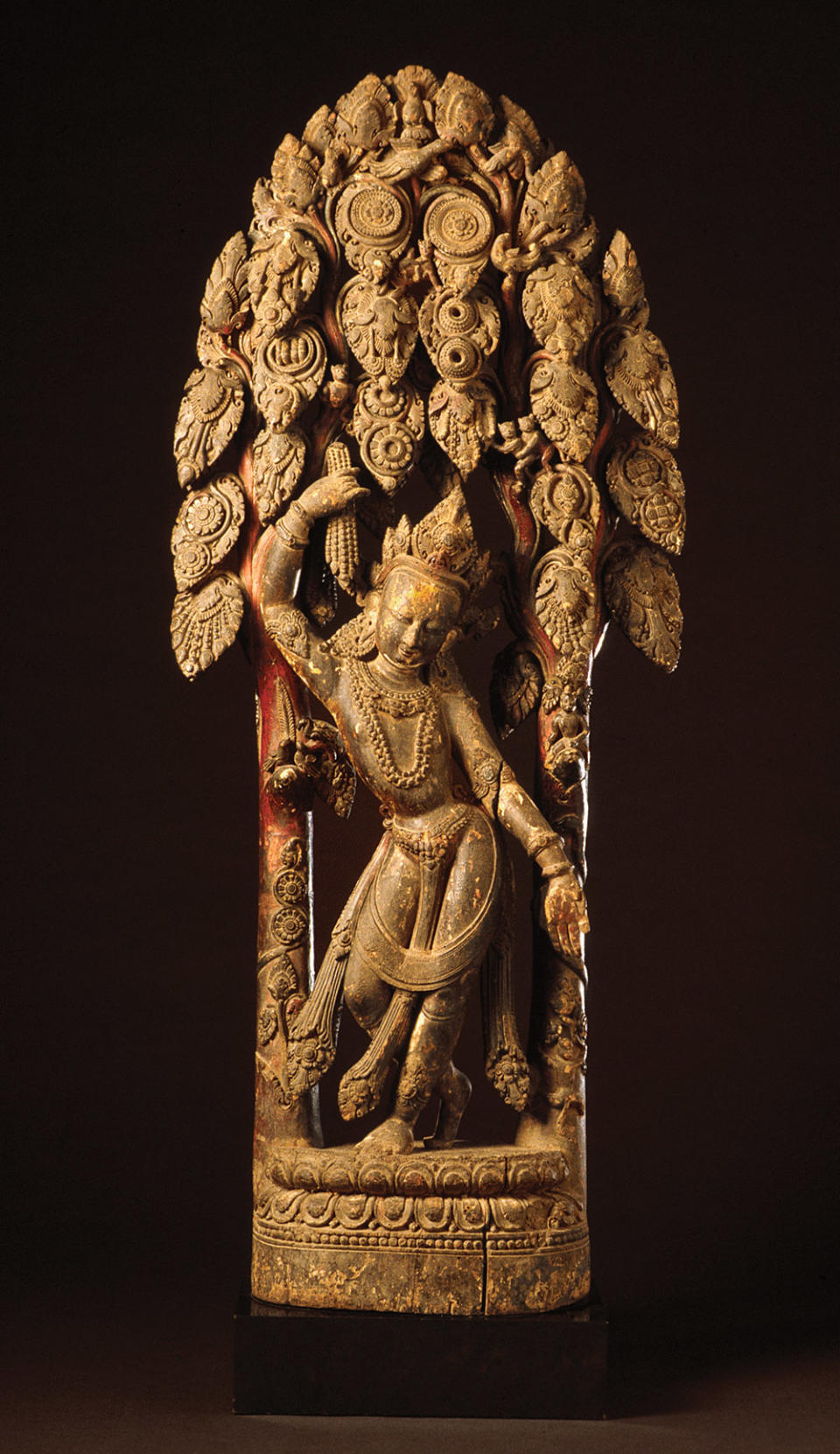
More recently, Phillips has found himself caught in another provenance mess spurred by those incognito advocates in Nepal, along with their allies in organizations like the Nepal Heritage Recovery Campaign, all bolstered by supportive Western scholars. It involves a 12th century Nepalese sculpture he helped the Los Angeles County Museum of Art acquire four decades ago. The piece, purchased from a Madison Avenue gallerist, features a large Buddha surrounded by intricate vignettes depicting his life, in unalloyed copper with traces of gilding. He says with a sigh, “There are questions today that weren’t in the air then.”
The previously unasked questions about Nepalese holdings at LACMA, either donated by patrons or financed through their support, go beyond Phillips. Other Hollywood figures who helped LACMA build its world-renowned South and Southeast Asian art collection include Michael Douglas, who gifted a cotton-cloth painting from 1679, depicting three mother goddesses, that is now in dispute. (He didn’t return a request to speak.) So, too, the patronage of the late James Coburn, who gifted several since-challenged pieces, including a millennium-old sculpture of the mythical aquatic creature Makara and an explicit circa-1830 depiction, in watercolors, of a royal male and a woman “in union.” Also, that of the late pioneering agent Phil Berg — aside from representing the likes of Gable and Garland, he’s the one who created the “package deal” — whose largesse helped bring several Nepalese pieces to LACMA, among them a gilt copper depiction of two deities from 600-plus years ago and a ceremonial brass candleholder dating to 1734, both now in question.
Activists and scholars believe such sacred objects lose their meaning when displayed in glass cases, separated from their cultural context. They also believe many of LACMA’s Nepalese holdings could have been illegally removed from their land of origin. In a few cases, they wield smoking-gun documentation of objects purportedly in-situ back in Nepal. In general, they note that the country allowed foreign visitors only beginning in the early 1950s, after the fall of the authoritarian Rana dynasty; soon after, the government banned the export of culturally significant historic and artistic objects. Given these circumstances, they believe the onus is on the museum, which opened in 1965, to be transparent about what it knows (or more likely doesn’t know) about chain of title.
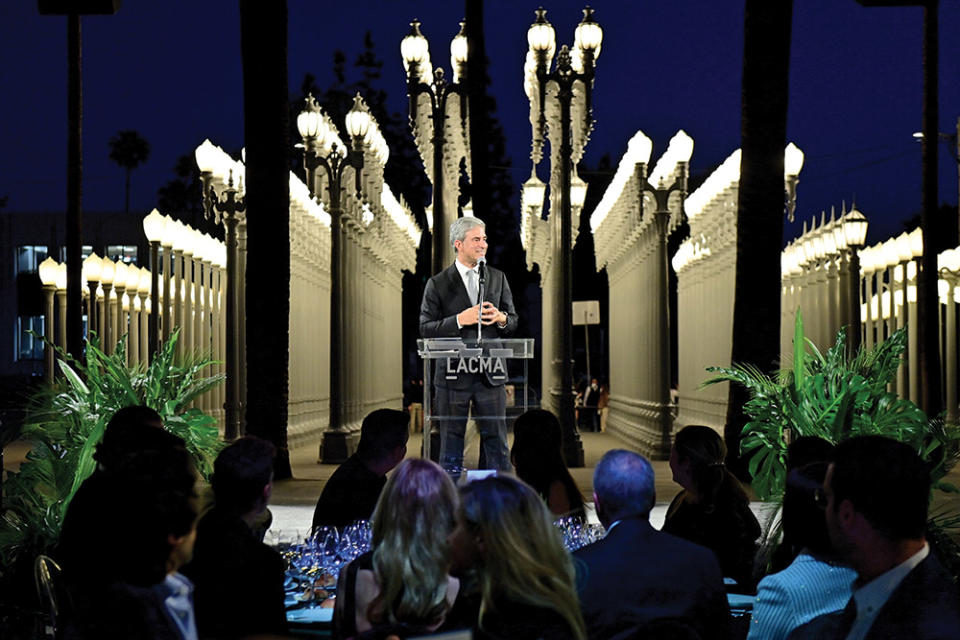
For its part, LACMA, an institution that has long cultivated a relationship with the entertainment industry — its board is brimming with moguls and their spouses, its glittery annual Art + Film gala an A-list-only affair — tells The Hollywood Reporter that it’s launched an internal review. (The position of department head of Southeast Asian Art, which includes Nepal, is named to honor the patronage of former MGM chairman Harry Sloan.) “The museum takes all inquiries about provenance very seriously,” a spokesperson assures. LACMA declined to answer specific questions about its probe, including whether it’s cooperating with domestic or foreign legal authorities. It also rebuffed THR’s request to speak with its director, Michael Govan, or senior administrators.
Instead, the museum broadly noted that “if new evidence or research supports a claim, LACMA returns the works to the original country, if appropriate. LACMA’s curators are extremely engaged in this process and as opportunities arise have sought to form closer relationships with claimants in order to reach mutual agreement and encourage future collaborations.”
***
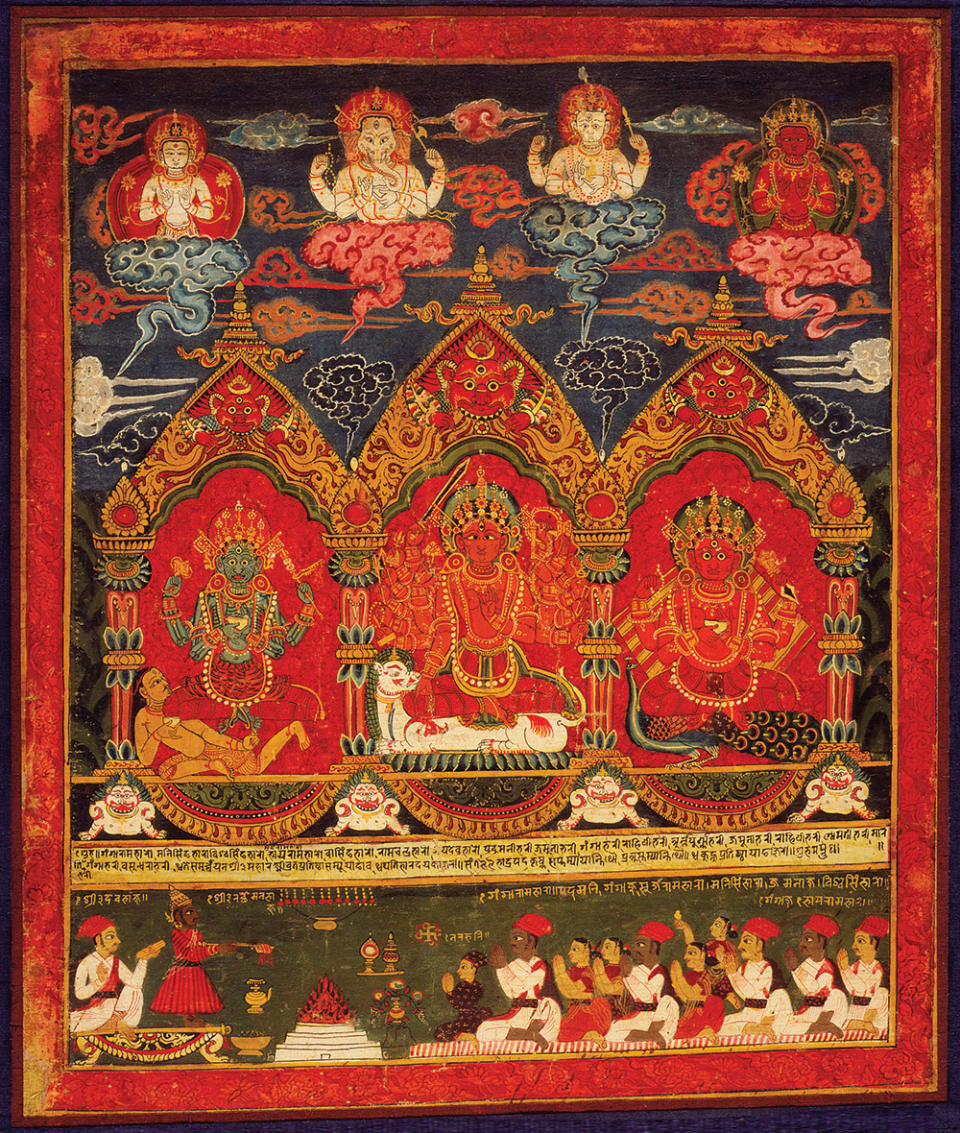
It’s unclear how industrious LACMA has been with its inquest, whose existence emerges as, in recent months, New York’s Metropolitan Museum of Art itself returned multiple Nepalese objects and the Himalayan antiquities-focused Rubin Museum announced its imminent closure after experiencing its own provenance woes. Phillips tells THR he hasn’t been contacted about any inquiry. Neither has Pratapaditya Pal, the former LACMA curator and esteemed Himalayan cultural scholar who acquired many of the disputed pieces. Nor has the activist group Lost Arts of Nepal, which relies on crowdsourcing and digital image-matching (primarily from museums’ own records, as well as auction catalogs and other documentation) to pinpoint allegedly looted works.
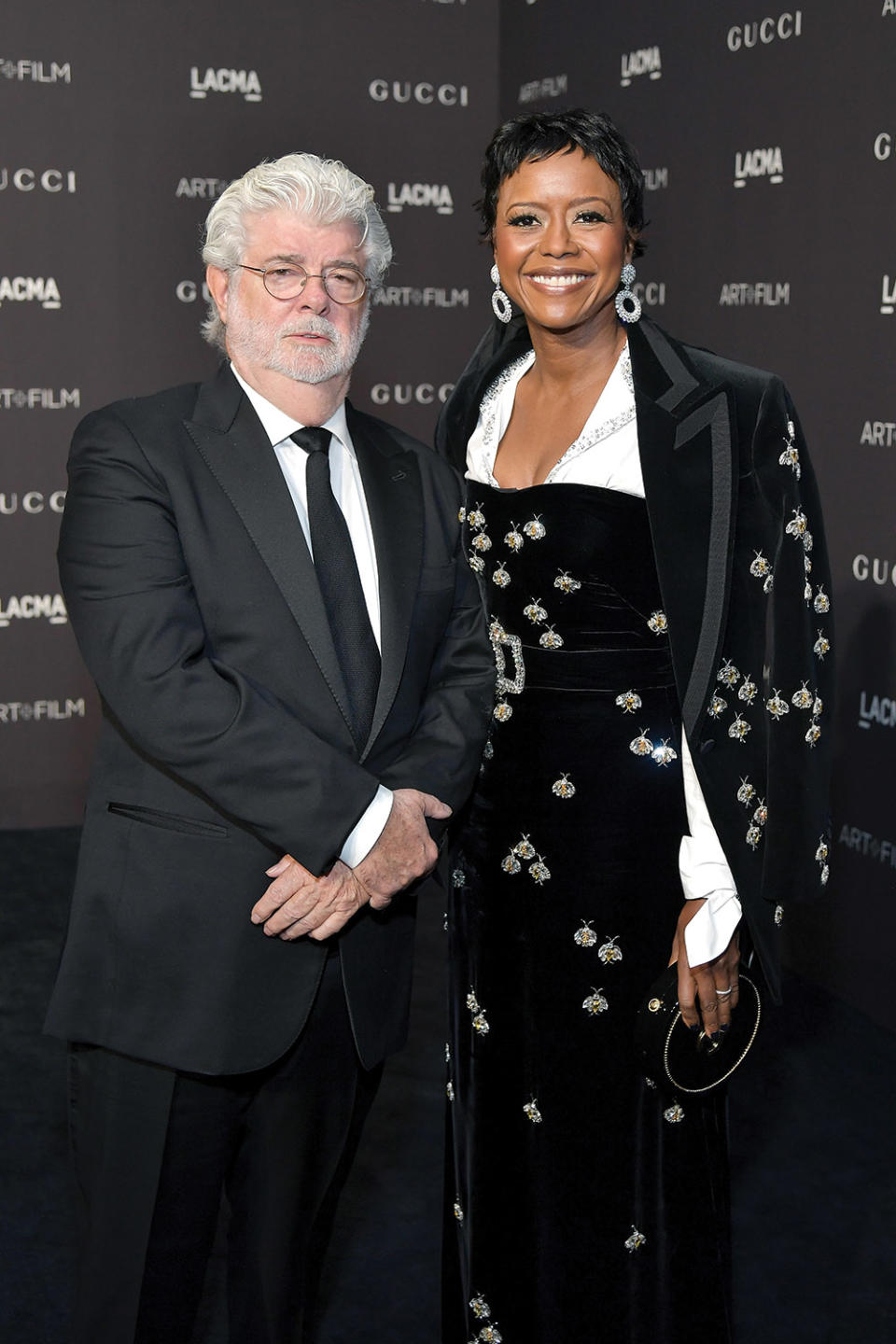
For experts in museum ethics, LACMA’s handling of the situation — which partisans see as a proxy battle in a larger war over evolving ideas of power at the nexus of art, justice and globalism — is unsurprising yet unfortunate. To them, the prevailing ethos is catch-me-if-you-can.
“It’s normal to keep it as secret as possible,” explains Patty Gerstenblith, the director of the Center for Art, Museum & Cultural Heritage Law at DePaul University. “They’re conducting this review? They don’t want to tell you what they think is questionable because it will encourage claims. Right now, they’re in control. They’re judge and jury, deciding for themselves.”
Gerstenblith adds, “They want to say they came to their own conclusion and are being generous about giving [objects] back. By keeping this under wraps, it gives the museum more flexibility down the road to control the narrative and make them sound really good on a story where they could sound really bad.” (In lieu of discussing its Nepal probe, LACMA pointed THR to a 2020 article by its curators detailing how the institution had determined that Buddhist treasures in its collection were to be returned to an order of monks in Korea; the piece positioned the museum as detective, friend to the wronged and protector of treasures, highlighting the financial assistance provided by Miky Lee, the Parasite producer and CJ Group vice chair.)
Erin Thompson, a professor of art crime at John Jay College of Criminal Justice, is skeptical that institutions like LACMA can police themselves. “They’ve been the experts in acquiring, maintaining, displaying and preserving these artifacts, and they are eager to hold on to that power and they are asking us to trust them,” she says. “But as more and more provenance research has shown, there are things in museums that shouldn’t be there. So, you’re asking the fox to declare that the henhouse is safe.” Thompson notes that LACMA — which was the last major U.S. museum to assemble an encyclopedic collection, meaning objects representing the span of human history and culture — is likely now facing an existential crisis. “Once you begin to repatriate,” she says, “that’s the first admission that you need to look at everything you have. They may be reluctant because they have a lot to be worried about.”
***
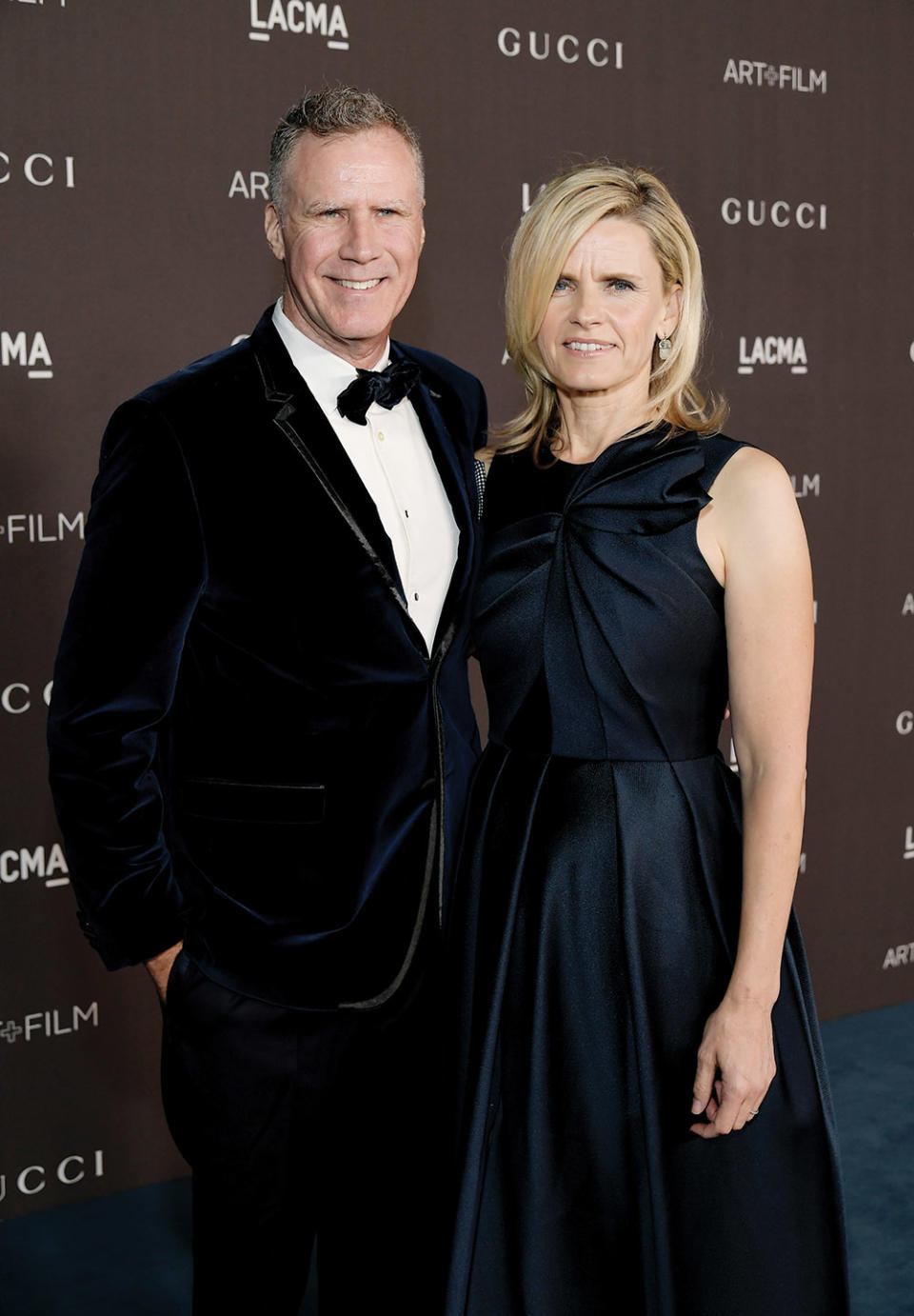
Pal, who retired in 1995 from LACMA after a quarter-century career building its collection, declined to be interviewed about the disputed Nepalese relics acquired during his tenure. Yet past writings by the eminent scholar, now 89, shed some light on how Hollywood names became passionate about collecting Nepalese art. For instance, the common link between Phillips, Douglas and Coburn was a shared accountant “who was an expert in the matter of art donation,” according to a reminiscence on Asianart.com. Phillips also introduced Pal to Steven Spielberg at a party, prompting Pal to speak about a Buddha figure before them in the hope that the filmmaking icon might become an Asian-antiquities devotee, too, a moment Pal wrote about: “He listened to my mini sermon patiently but was not converted.”
Pal is known in his realm for having advised the industrialist Norton Simon as he assembled the Asian art collection for Simon’s eponymous Pasadena museum. The billionaire, now deceased, was forthright as early as 1973 about how he obtained much of it: “Hell, yes, it was smuggled,” he told The New York Times about a Hindu deity that Indian government officials said was stolen. “I spent between $15 million and $16 million over the last two years on Asian art, and most of it was smuggled.” THR cannot confirm whether Pal was aware of these provenance issues.
By Pal’s account, at one point Gene Kelly contacted him, inquiring about an appraisal of a piece he’d acquired, an Indian bronze depicting Shiva, aware that Simon’s own similar deity was valued at $1 million. “Unfortunately, I had to tell him that his piece, though of good quality, was not as old but of more recent origin,” Pal wrote. “I did assure him, however, that he did not do badly because it would still sell for considerably more than what he paid for it,” adding: “I could see the slight disappointment in his handsome face but recommended that he get it technically examined at LACMA’s conservation laboratory. I don’t know if he did so, but I never did hear from him again.”
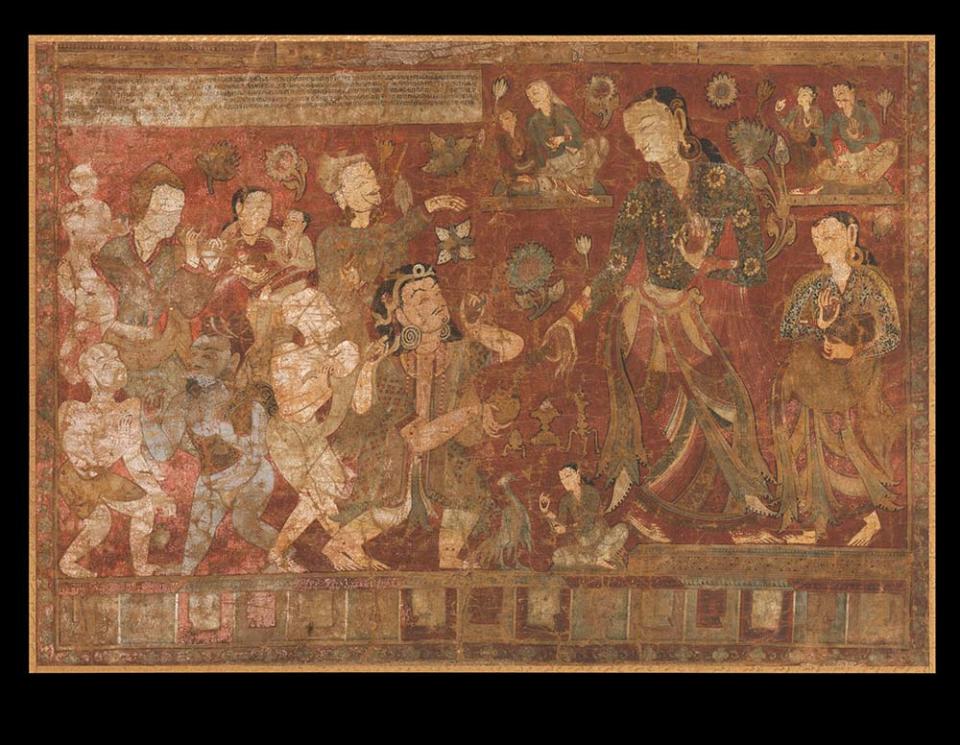
During the same era, the Met, arguably America’s preeminent encyclopedic museum, was also expanding its antiquities holdings under Thomas Hoving, its legendary longtime director (who died in 2009). “My collecting style was pure piracy,” Hoving later confessed in his memoir on the museum trade, noting that his contacts included “dealers and private collectors, smugglers and fixers.”
Since then, there’s been a reckoning. First there was a push to repatriate Nazi-looted art and artifacts. Then antiquities from Greece, Turkey and Italy. (The Getty became notorious for its hoard of looted pieces, most prominently a slew of sculptures depicting ancient gods, which it was forced to give up.) More recently, focus has widened from Europe across the globe. Requests — some granted, others so far ignored — have been made regarding LACMA’s miscellany: to send bronzes back to Benin (as France’s Quai Branly museum has done), deity sculptures back to India, a stone monument back to Mexico, a heraldic screen back to Indigenous Alaskans in Hawaii.
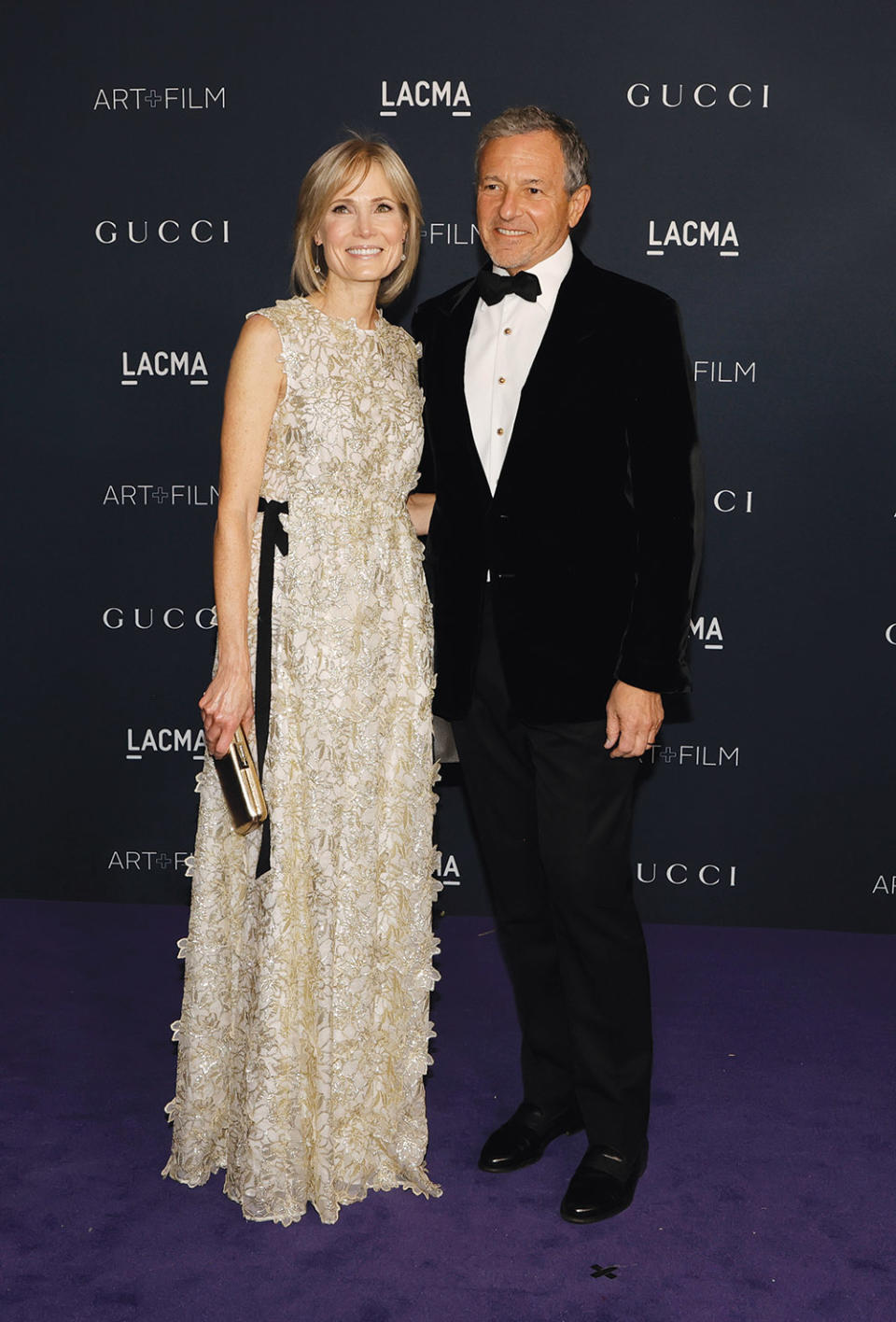
Meanwhile, last year the Met announced a plan to hire a four-person provenance research team, the first of such scope in the nation, to scrutinize its holdings, which of late have been subject to seizure by the Manhattan District Attorney’s Office for repatriation everywhere from Nigeria and Egypt to Cambodia. “It is incumbent upon the Met to engage more intensively and proactively in examining certain areas of our collection,” the museum’s director said in a publicized letter to his staff.
***
A rear guard has long since mobilized against the repatriation movement. For members of the museum-world establishment, it’s a practical issue as well as a philosophical one. They note that determining the circumstances of how problematic objects left a country can be complicated and ambiguous. While they might have departed by theft, fraud or coercion, there are legitimate possibilities, too. They could have been acquired as a diplomatic gift, for example, or in an agreement between local officials and foreign visitors, such as archaeologists.
In 2002, the directors of more than a dozen of the West’s most prominent exhibition halls — including the Louvre, the Prado and the British Museum — issued a joint statement decrying illegal trafficking while staunchly defending themselves. The institutions contended that such objects have become “part of the heritage of the nations which house them. Today we are especially sensitive to the subject of a work’s original context, but we should not lose sight of the fact that museums too provide a valid and valuable context for objects that were long ago displaced from their original source.” The museums’ attitudes have not evolved much in the intervening decades, even as calls for repatriation have grown ever louder.
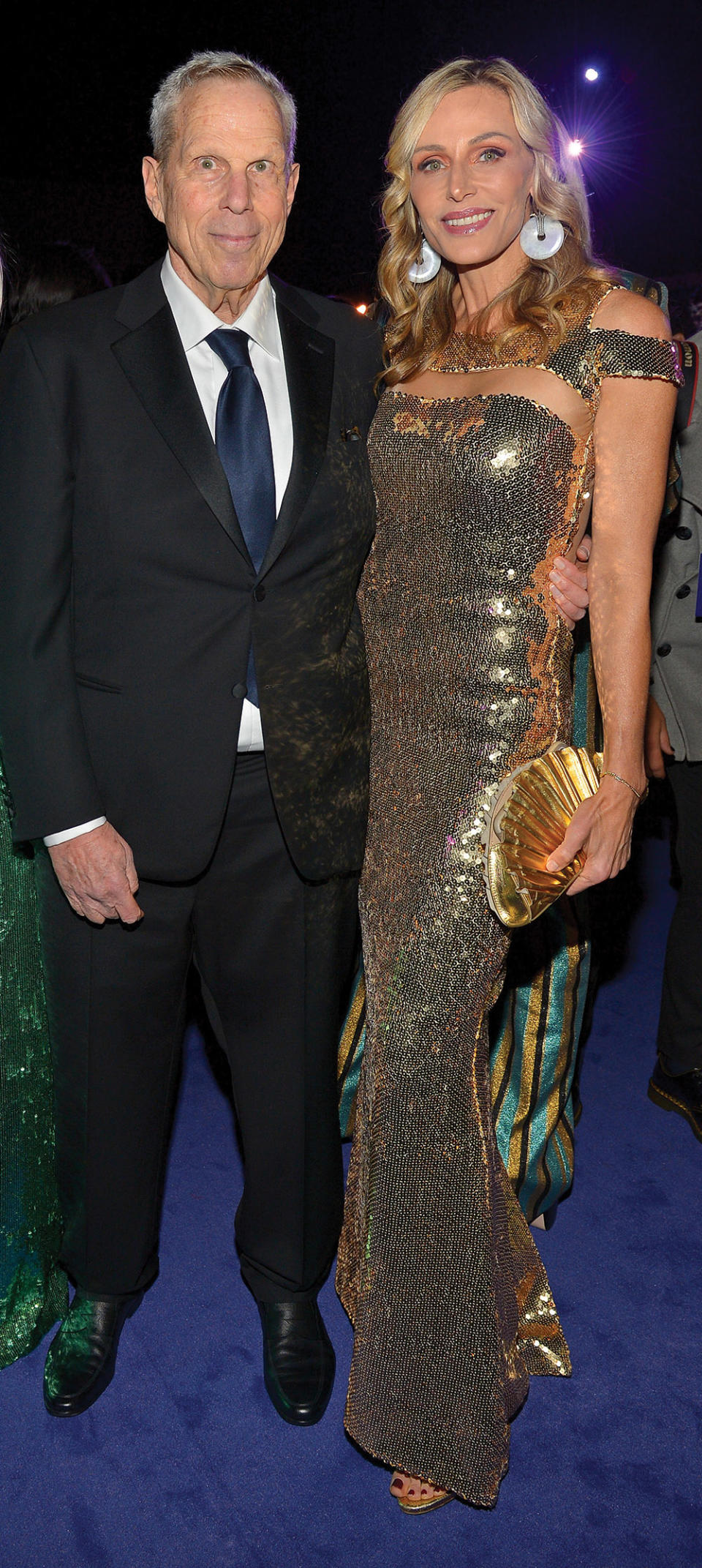
Pal himself aligns with this group. “I am strongly opposed to the idea of repatriating art in general,” he told culture journal The Believer in 2021. In his view, objects were better off in their new homes. “Have you been to the oldest museum in Asia?” he said. “It’s in Calcutta. Forget about the display, which is disgraceful, but if you wanted to see the thousands of objects in their storage, you’d have to take a sweeper along with you to dust the sculptures, or you won’t see anything!”
Pal has more recently highlighted a 2023 position paper critical of repatriationists by museum law specialist Kate Fitz Gibbon, who was a member of the Cultural Property Advisory Committee to the President during the George W. Bush administration. She asserted that Nepal had failed to enforce its own laws over decades — “many objects now in U.S. museums were knowingly waved through Nepalese Customs onto international flights by complacent officials who were given permission to do so by people at higher levels of government” — and faulted the recent push to return artifacts as a “blanket approach” that too often relies on too little “actual evidence of theft.”
Others disagree. Donna Yates, a criminal law professor and expert in antiquities trafficking at Maastricht University in the Netherlands, tells THR that past enforcement records by past governments shouldn’t determine right from wrong now: “Obviously such alleged crimes should be investigated in the original country, but why should anyone be benefiting from the proceeds of those crimes in the form of cultural objects?” Emiline Smith, a criminology lecturer at Scotland’s University of Glasgow and specialist in antiquities trafficking who’s done fieldwork in Nepal, observes that today’s museums, including LACMA, have not just a legal but a moral obligation to do more. “They are stakeholders in a very exploitative trade,” she says. “They need to hold themselves accountable both for their practices in the past as well as in their practices now.”
***
With technological advances making it ever easier to identify works, and restorative social-justice energy coursing through cultural corridors, once-unthinkable notions are materializing. In January, the American Museum of Natural History — whose prestigious anthropology department was home to the likes of Margaret Mead — shuttered a pair of major exhibition spaces, totaling 10,000 square feet, which were dedicated to Native American objects after new federal regulations went into effect requiring institutions to obtain consent from tribes before displaying or even researching their pertinent holdings (with repatriation another possibility).

Michael Phillips is concerned that LACMA — which hopes to open its long-awaited $750 million new exhibition wing in about a year (named the David Geffen Galleries after the lead donor) — might choose not to exhibit its controversial works, even if the museum resists, or slow-walks, sending them back to source countries. “They’ll hide the objects in the basement, hoping that things will change [in public opinion],” he speculates.
Phillips senses “a chill” in the field of antiquities, which to his mind is now caught in a vise between progressive and reactionary sentiments: “It’s a cancel-culture thing and also blood-and-soil nationalism.” He goes on, “Yes, for the pieces that were stolen or improperly exported, it’s black and white. But now the whole field is in such a shadow. It’s very sad because these objects tell such important stories.”
This story first appeared in the Feb. 14 issue of The Hollywood Reporter magazine. Click here to subscribe.
Best of The Hollywood Reporter

